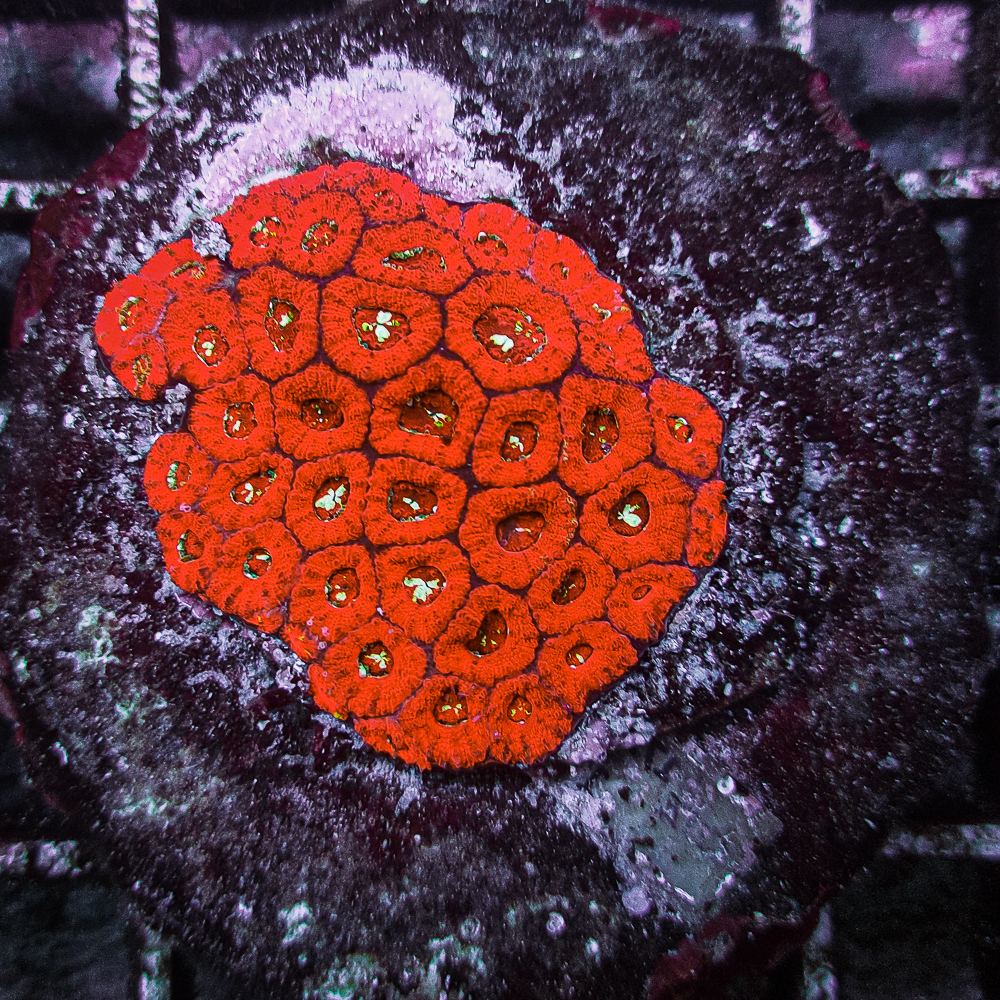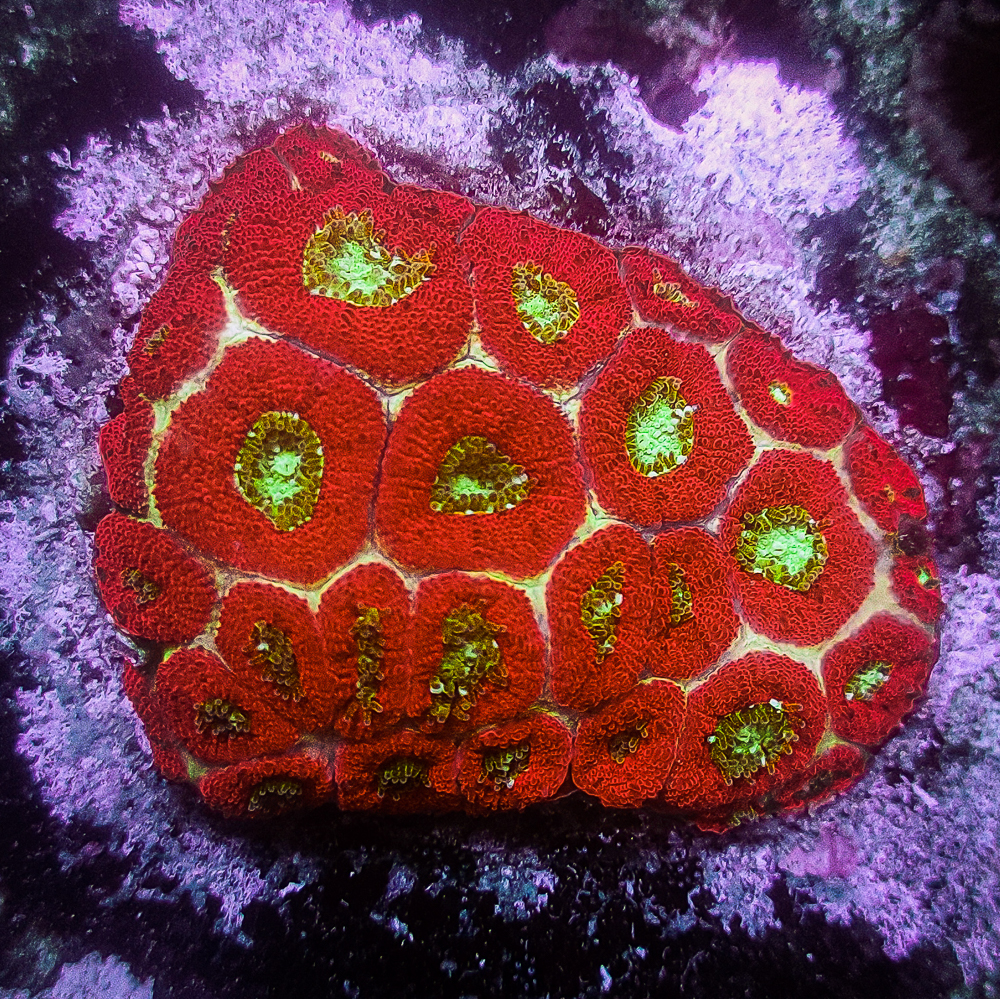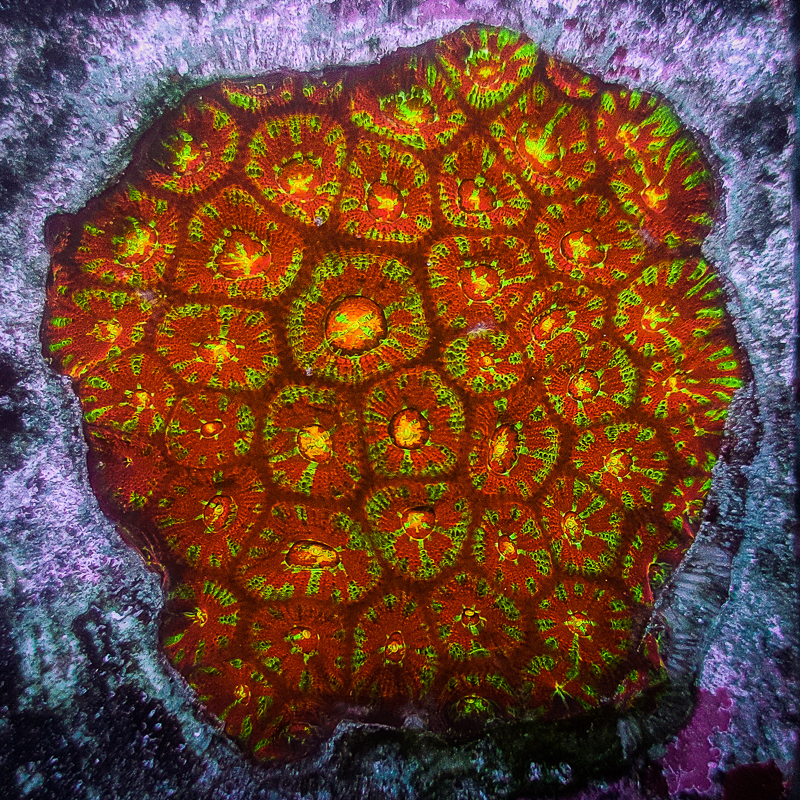
During a recent visit to the biggest Indonesian ex-situ coral farm, Bali Aquarium, I couldn’t help but notice the very nice collection of Micromussa amakusensis (formally Acanthastrea amakusensis, and still administratively called by its former genus name ‘Acanthastrea‘). While the Indonesian diversity of Micromussa lordhowensis is nowhere close to what is seen in Australia, the diversity within Indonesian Micromussa amakusensis is quite impressive.
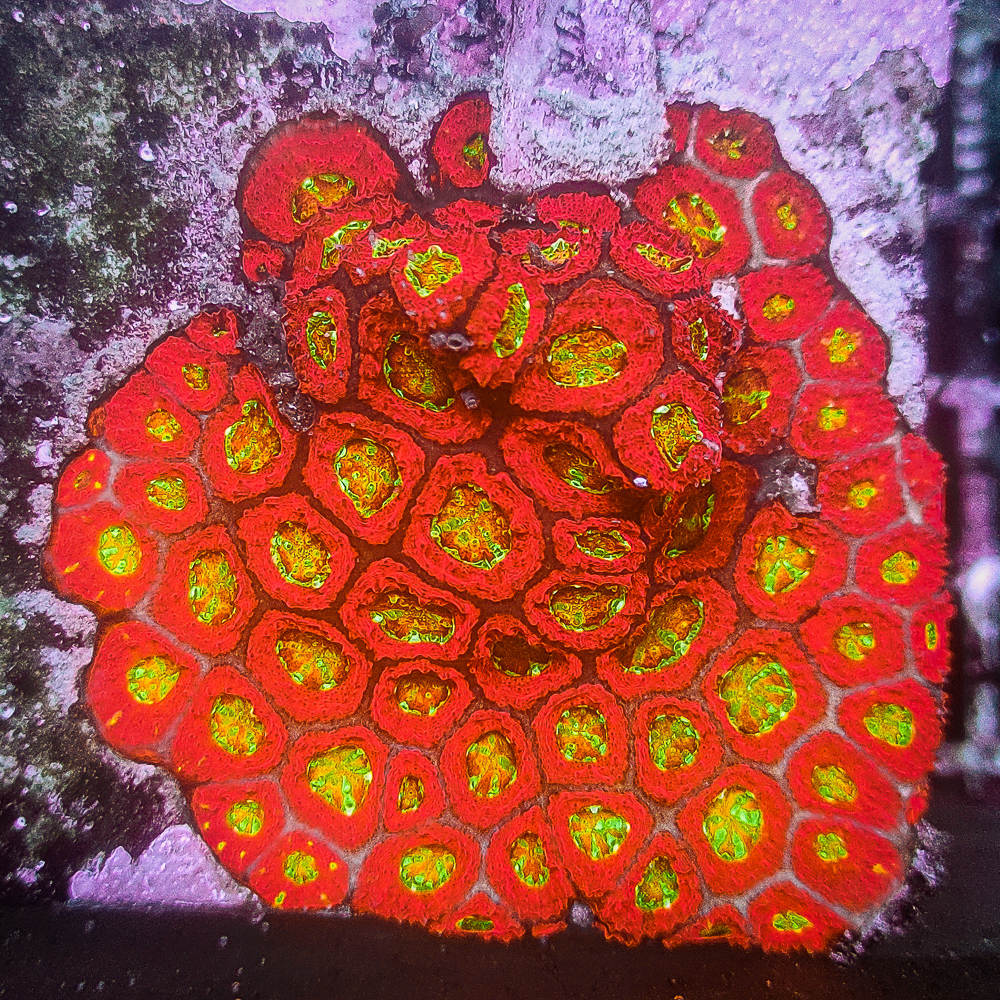
Unfortunately, Reef Aquarists worldwide do not know or appreciate that species. After all, it’s just a smaller polyp Micro lord. The UFO Micro Lord is the only real M. amakusensis that made it to the reef aquarium scene.
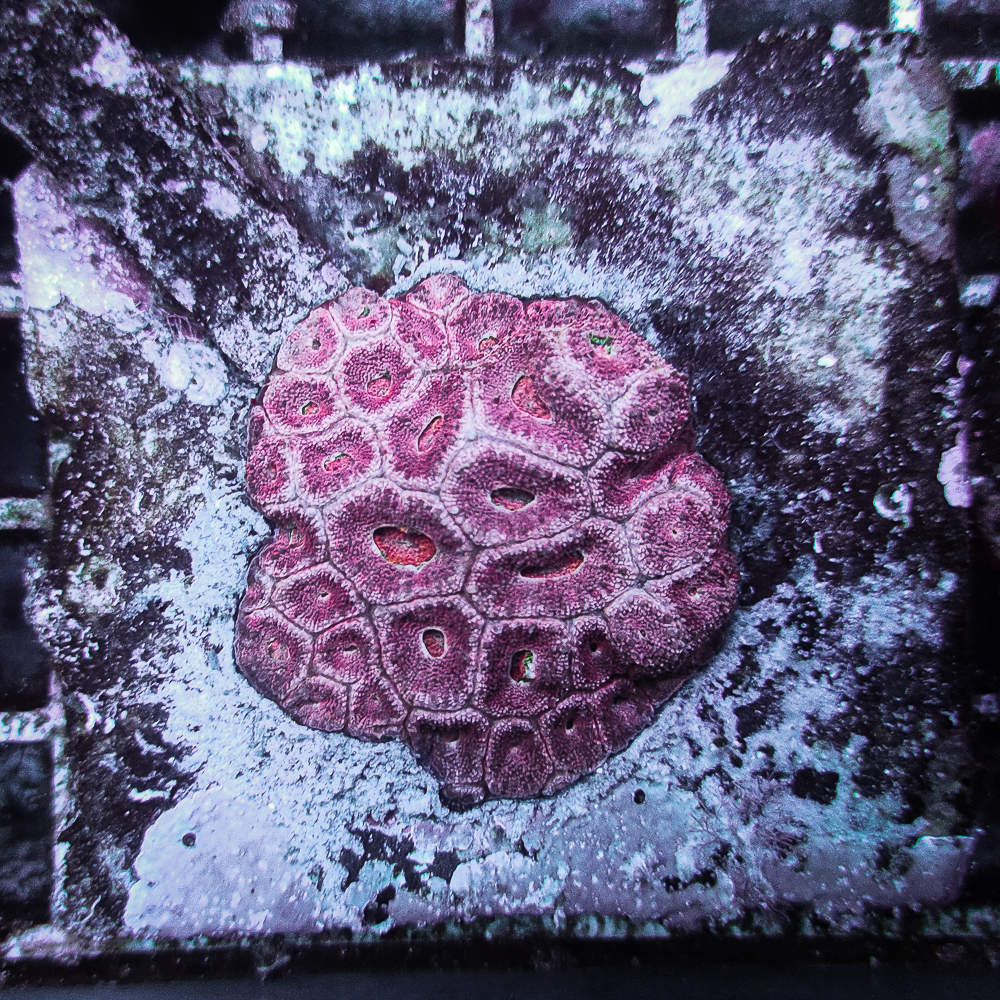
Technically the only obvious difference between the two species is only a couple of mm in corallite diameter. However, in addition to their difference in polyp size, there are quite many differences too in terms of coloration and patterning. Radiating stripes or bands are more typically seen in Micromussa lordhowensis, although this pattern can be seen in M. amakusensis.
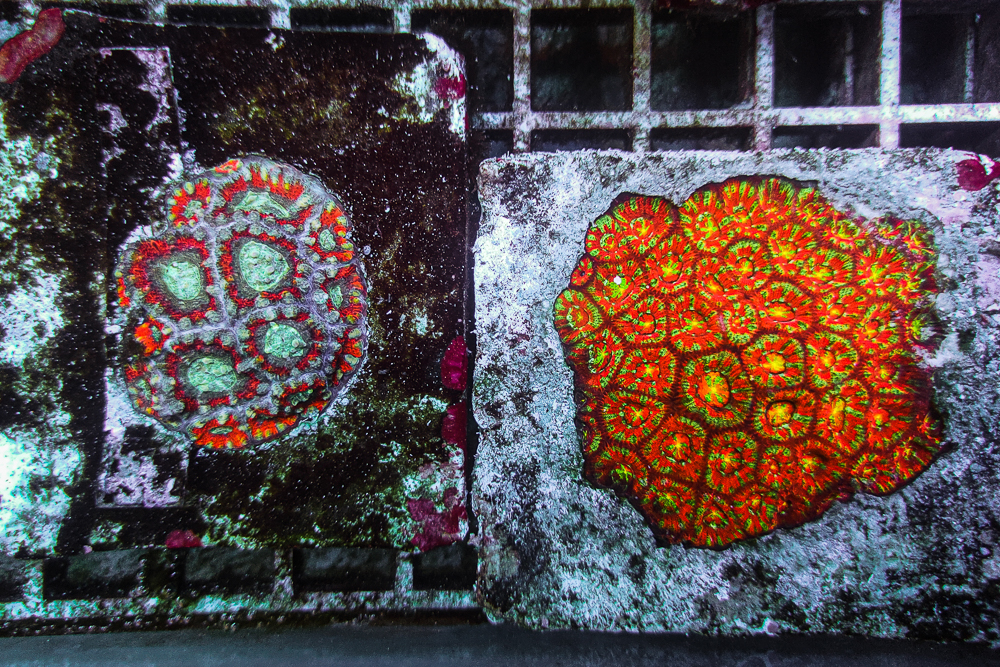
Oftentimes, morphs of Micromussa amakusensis display more solid coloration or are patterned with subtle rings, with the mouth color differing from the rest of the polyp’s flesh.
These corals also have distinct habitat preferences. Australian Micro Lords like swell-beaten rocky reefs and are often found in sub-tropical/semi-temperate oceanic waters. In Indonesian, Micromussa amakusensis occupies this niche, while colonies of M. lordhowensis live significantly deeper and in much calmer water than their Australian counterparts. I suspect that molecular analysis of these corals could reveal a surprise or two!
Both species develop thin encrusting, layered skeletons, and are easily scraped off of some substrates. These colony characteristics make them perfect candidates for farming and micro-fragmentation. In fact, if they are trimmed properly, they just grow a thin layer over their substrate. Ultimately, optimizing thei growth and leveraging this characteristic makes them a very good propagation candidate species for an LPS coral farm.
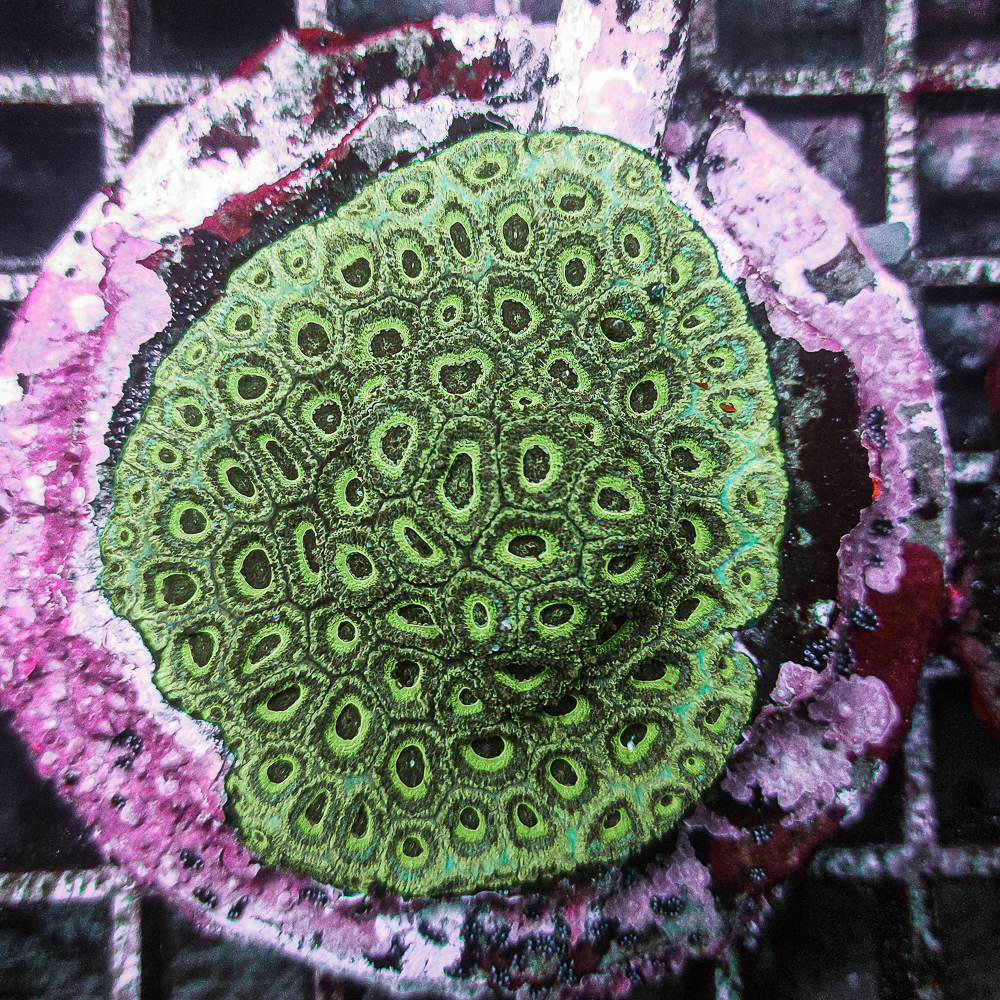
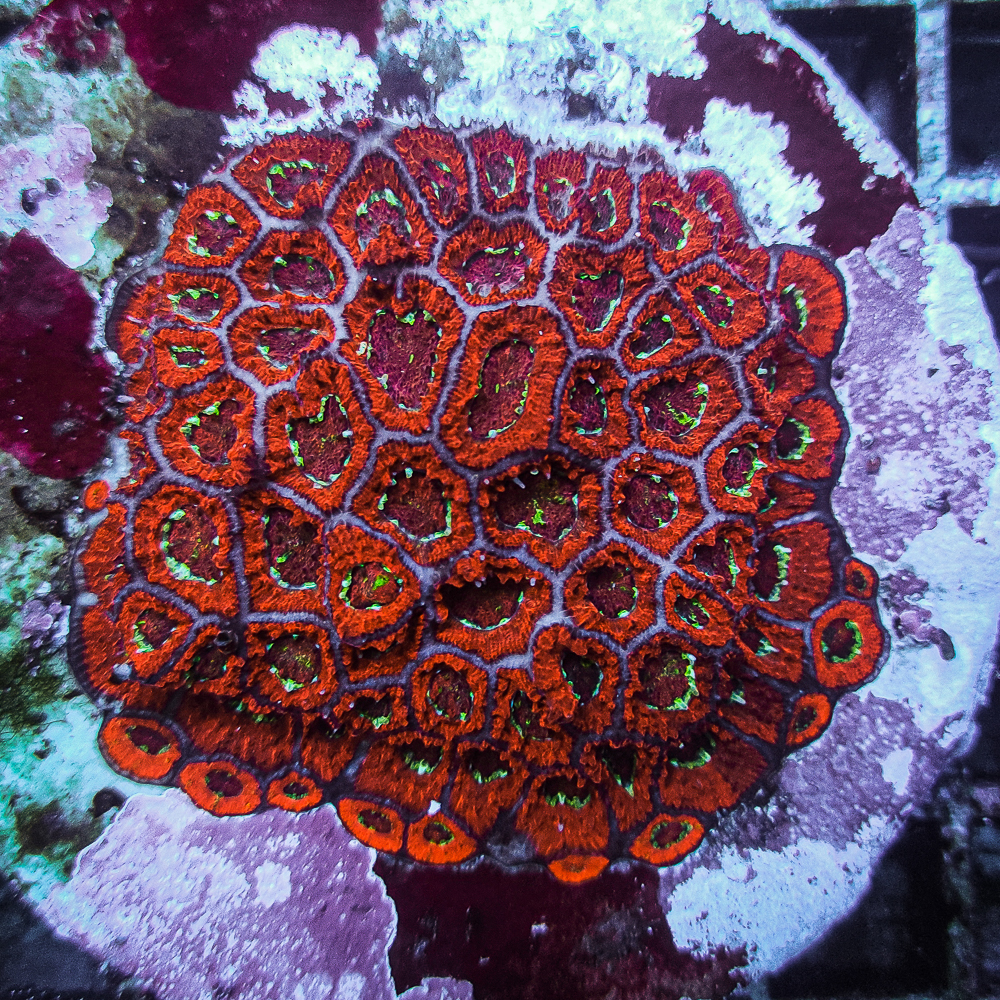
Micomussa amakusensis is still quite rare in the aquarium trade but should draw more attention to the hobby in the near future, and arguably should draw the same kind of attention Micro-lords have. Perhaps we’ll be seeing reef aquariums featuring Micro-Amakusensis gardens in the near future?
